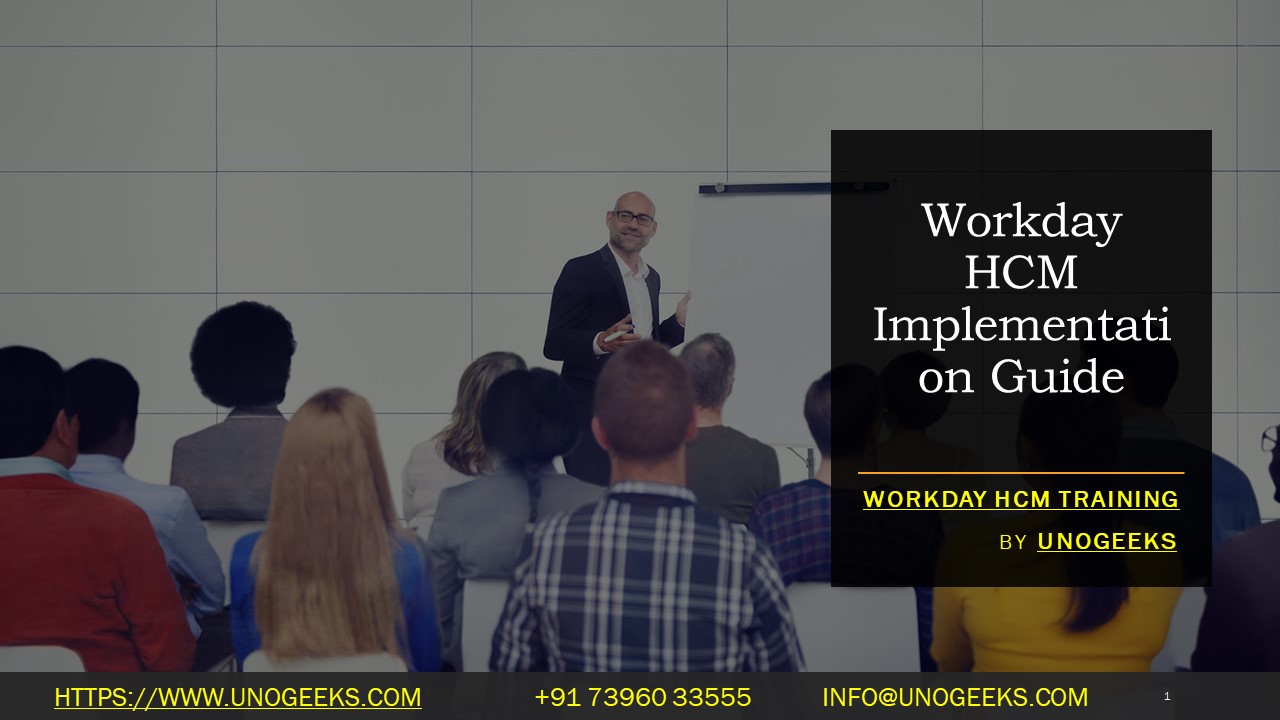Workday HCM Implementation Guide
Phases of Implementation
Workday HCM implementations generally follow these key phases:
- Plan
- Set goals and objectives: What are you specifically trying to achieve with this implementation? (e.g., improve data accuracy, streamline processes, enhance reporting)
- Assemble your Workday team: Include executive sponsors, IT, HR, and key stakeholders from across the organization.
- Evaluation and selection: If you need to select a Workday implementation partner, carefully research and choose a reputable one with relevant experience.
- Define timeline and budget: Create a realistic schedule with milestones and set a detailed budget.
- Architect
- Business process review: Conduct a thorough analysis of your existing HR processes. Identify areas for improvement and those that align well with Workday functionality.
- Workday design: Map your improved processes to Workday’s capabilities, configuring the system where necessary.
- Identify integrations: Determine which external systems need to interface with Workday (e.g., payroll providers, benefits platforms).
- Configure
- Build out Workday: Configure the modules you’re implementing (core HR, payroll, benefits, etc.) based on the design decisions from the architect phase.
- Data migration: Plan for the careful extraction, cleansing, and loading of your legacy data into Workday. This is a complex and critical task.
- Testing: Rigorously test all configurations, integrations, and data. This includes unit testing, integration testing, and user acceptance testing.
- Deploy
- Change management: Communicate frequently and transparently with your entire organization throughout the project. Highlight the benefits of Workday and address concerns.
- Training: Develop comprehensive training plans with role-specific materials for all users. Explore different methods like self-paced, instructor-led, and hands-on simulations.
- Go-live: Deploy Workday into your production environment. Be prepared for potential issues and have support on hand.
- Support
- Hypercare: Provide intensive support post-launch to quickly address unexpected issues and user questions.
- Ongoing optimization: Regularly review your Workday processes and data. Look for areas to continuously improve the way you use Workday.
- Key Considerations
- Change Management: Don’t underestimate the impact on your users. Proactive communication, thorough training, and continued support are key.
- Data Quality: The success of your Workday system depends on accurate and clean data. Prioritize data review and cleansing during your implementation.
- Customization vs. Configuration: Workday is highly configurable. Minimize customizations whenever possible to simplify maintenance and future upgrades.
- Testing: It’s crucial to invest time and resources in thorough testing to avoid significant issues down the line.
- Post-Implementation Support: Plan for ongoing maintenance and optimization. Consider a support model with your partner, Workday directly, or a combination.
- Plan
You can find more information about Workday HCM in this Workday HCM Link
Conclusion:
Unogeeks is the No.1 IT Training Institute for Workday HCM Training. Anyone Disagree? Please drop in a comment
You can check out our other latest blogs on Workday HCM here – Workday HCM Blogs
You can check out our Best In Class Workday HCM Details here – Workday HCM Training
Follow & Connect with us:
———————————-
For Training inquiries:
Call/Whatsapp: +91 73960 33555
Mail us at: info@unogeeks.com
Our Website ➜ https://unogeeks.com
Follow us:
Instagram: https://www.instagram.com/unogeeks
Facebook: https://www.facebook.com/UnogeeksSoftwareTrainingInstitute
Twitter: https://twitter.com/unogeek
